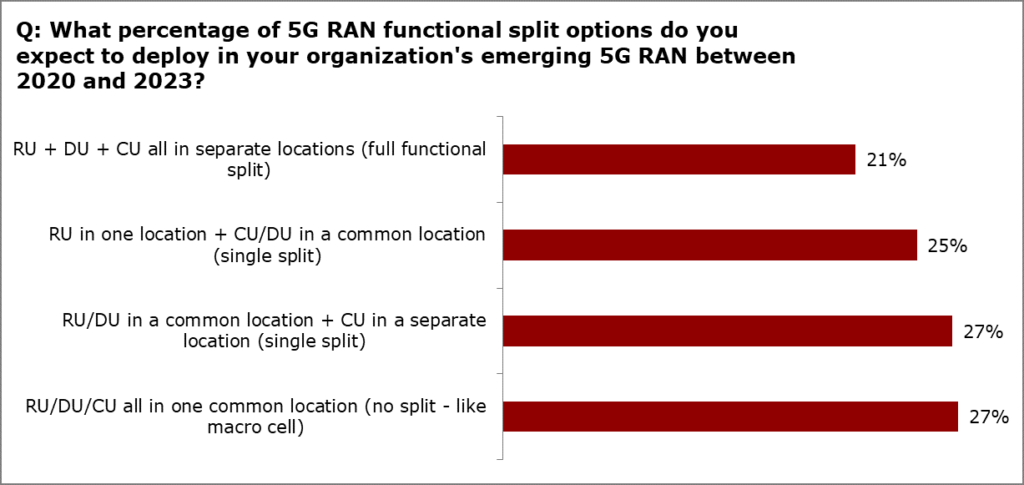
5G commercial rollouts are in full swing. By the end of May 2020, a total of 81 operators in 42 countries had launched one or more 3GPP-compliant services, according to the Global Mobile Suppliers Association (GSA). But the early commercial deployments have not yet had a big impact on transport network architectures. With the recent freeze of 3GPP Release 16 in July, the industry is starting the real race to offer the full functionality of 5G at massive scale.
In order to understand how transport networks will evolve to support 5G services, Heavy Reading launched the Operator Strategies for 5G Transport Market Leadership Study with collaboration partners Anritsu, Ericsson, Fujitsu and Infinera in May 2020. The survey attracted 86 qualified network operator respondents from around the world that shared their views on transport deployment issues and timelines, fronthaul networks and radio access network (RAN) centralization, routing and synchronization and testing 5G networks.
This blog is the first in a four-part series highlighting the key findings from the 2020 study. It focuses on centralized RANs (C-RANs) and particularly the implications for fronthaul connectivity.
Splitting the RAN
Functional decomposition in the RAN presents operators with several architectural options for the transport network. These options include fully distributed RANs (like traditional macro cells), a fully centralized RAN and some split RAN options. In its survey, Heavy Reading asked operators to estimate the 5G RAN functional splits options they expect to deploy in their emerging 5G RANs between 2020 and 2023. For each individual respondent, functional split percentages had to tally 100%. The following figure shows the average functional split breakdown for the full survey group.

Anyone hoping for a single winning RAN split option will be disappointed. The results show a remarkably even breakdown among the four options. At the high end, the traditional macro architecture and the remote/distributed + centralized unit (RU/DU + CU) option each garnered 27% share, while the single split C-RAN garnered 25%. At 21%, the full functional split option (RU + DU + CU) took the lowest share. But the key point is that the range is tight between the most and least favored options.
While there is no single standout, the results, nonetheless, are a strong endorsement for split architectures generally. Taken as a whole, traditional distributed macro architectures will account for roughly a one-quarter share of emerging 5G, based on the results, while the remaining three-quarters share is expected to be some form of partial or full centralization. Furthermore, almost half (46%) plan to deploy architectures requiring a fronthaul network — in which the RU component is physically separated from the DU component.
Fronthaul connectivity
Fronthaul is relatively new and its performance requirements are demanding, so it is an area of intense study among operators. Heavy Reading asked operators about their expected mix of 5G fronthaul connectivity types, including fiber, microwave and Time-sensitive networking (TSN) options. For each individual respondent, connectivity options had to tally 100%. The following figure shows the average connectivity mix for the group.

On average, the expected connectivity mix is relatively balanced, but at 32%, active and passive wavelength-division multiplexing (WDM) connectivity was the top 5G fronthaul choice, followed closely by dedicated dark fibers (at a 27% share). Fronthaul demands capacity, and operators will largely choose direct fibers or WDM wavelengths to deliver it — depending on their own availability of fibers.
The results also show that in addition to capacity, fronthaul aggregation is important. More than half (55%) plan to implement some form of aggregation — whether it is wavelength aggregation with WDM (32%) or packet aggregation using IEEE TSN for fronthaul technology (23%). It is also possible to combine WDM with packet aggregation, though Heavy Reading did not call that out specifically. Regardless of method, the reason for aggregation is to drive efficiency and lower transport costs.
Looking for more information?